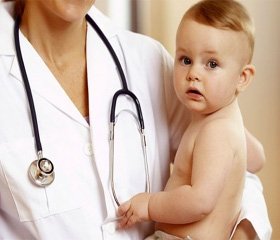Журнал «Медицина неотложных состояний» 6 (61) 2014
Вернуться к номеру
Assessment ofnutritional status andenergy needsof childrenin critical condition
Авторы: V. R. Mishchuk. MD. PhD. - DanyloHalytskyLviv National Medical University
Рубрики: Медицина неотложных состояний
Разделы: Справочник специалиста
Версия для печати
This articledescribesthe assessment ofnutritional status andenergy requirementsin critically-ill children. According to theguidelines fornutritionalsupport of theASPEN2009, the prevalence of malnutrition among critically ill patients, especially those with a protracted clinical course, has remained largely unchanged over the last 2 decades. Children differ from adults in that their food intake must provide sufficient nutrients not only for the maintenance of body tissues but also for growth. This is particularly true in infancy and during adolescence when children grow extremely rapidly. At these times children are particularly sensitive to energy restriction because of high basal and anabolic requirements. Children admitted with critical illnesses should undergo nutrition screening to identify those with existing malnutrition or those who are nutritionally at-risk.
Assessment ofnutritional statusof the childmay bebased onanthropometricdata,laboratory dataandclinical examination. However, weight changes and other anthropometric measurements during the pediatric intensive care unit (PICU) admission should be interpreted in the context of fluid therapy, other causes of volume overload, and diuresis. Nutrition assessment can also be achieved by measuring the nitrogen balance and resting energy expenditure (REE). Albumin, which has a large pool and much longer half-life (14-20 days), is not indicative of the immediate nutrition status. Independently of nutrition status, serum albumin concentrations may be affected by albumin infusion, dehydration, sepsis, trauma, and liver disease. Thus, its reliability as a marker of visceral protein status is questionable. Prealbumin (also known as transthyretin or thyroxine-binding prealbumin) is a stable circulating glycoprotein synthesized in the liver. Prealbumin, so named by its proximity to albumin on an electrophoretic strip, has a half-life of 24-48 hours. Prealbumin serum concentration is diminished in liver disease and may be falsely elevated in renal failure. Prealbumin is readily measured in most hospitals and is a good marker for the visceral protein pool.
It shouldbe emphasized thatеnergy expenditure should be assessed throughout the course of illness to determine the energy needs of critically ill children. Estimates of energy expenditure using available standard equations are often unreliable.
Daily energy requirements are usually estimated by adding the increased energy expenditure associated with activity, stress, disease state, injury and growth to the calculated basal metabolic rate of healthy children. The differences in actual energy needs versus calculated needs based on general equations arise from the special status of the patient, i.e.: reduced physical activity during illness, energy losses from ostomies, malabsorption, diarrhoea, underlying disease or inflammation, infection, impaired body composition and different energy routes of supplementation (oral, enteral feeding, continuous vs. intermittent feeding and parenteral nutrition ). In addition, the total energy expenditure of a child who is hospitalized and lying in bed is reduced. Among thebasic equations the Schofield equation using both weight and height measurements was the best at predicting REE. Nevertheless, all of these equations have been established in normal children and should be used with caution in sick children.
Energy needsdepend on theunderlying disease andthe current state ofnutrition.Some illnessescan resultto an increaseor decrease inenergy needs. Acute injury markedly alters energy needs. Acute injury induces a catabolic response that is proportional to the magnitude, nature, and duration of the injury. In mechanically ventilated children in the PICU, a wide range of metabolic states has been reported with an average early tendency towards hypermetabolism. Children with severe burn injury demonstrate extreme hypermetabolism in the early stages of injury whereby standard equations have been shown to underestimate the measured REE. Failure to provide adequate energy during this phase may result in loss of critical lean body mass and may worsen existing malnutrition. Stress or activity correction factors have been traditionally factored into basal energy requirement estimates to adjust for the nature of illness, its severity and the activity level of hospitalized subjects. On the other hand, critically ill children who are sedated and mechanically ventilated may have significant reduction in true energy expenditure, due to multiple factors including decreased activity, decreased insensible fluid losses and transient absence of growth during the acute illness.
In a subgroup of patients with suspected metabolic alterations or malnutrition, accurate measurement of energy expenditure using indirect calorimetry (IC) is desirable. If IC is not feasible or available, initial energy provision may be based on published formulas or nomograms. Attention to imbalance between energy intake and expenditure will help to prevent overfeeding and underfeeding in this population.Accurate assessment of energy requirements and provision of optimal nutrition support therapy through the appropriate route is an important goal of pediatric critical care. Ultimately, an individualized determination of nutrient requirements must be made to provide appropriate amounts of both macro- and micronutrients for each patient at various times during the illness course.

